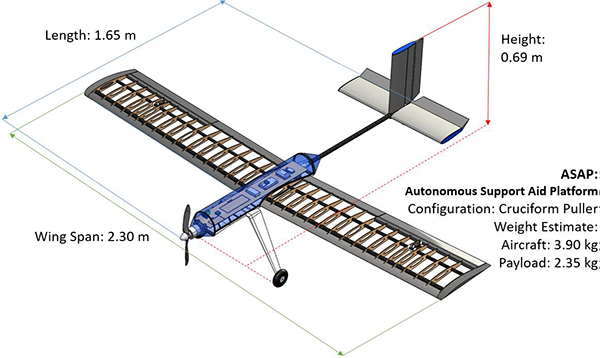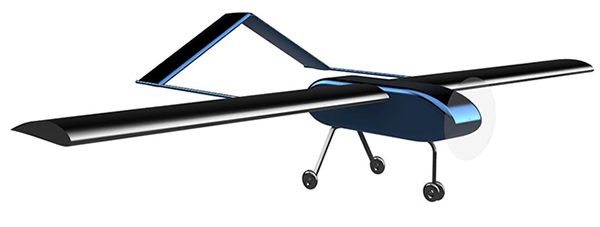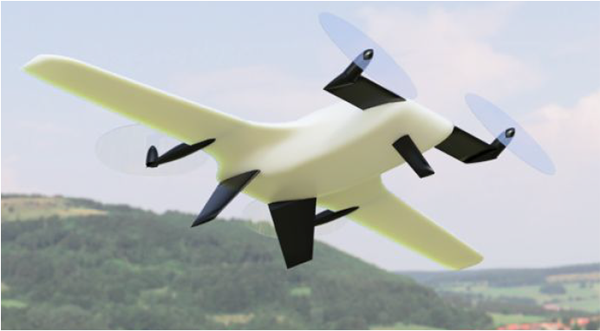Held annually since 2015, the UAS Challenge encourages university students to follow a system engineering process to develop, build and test an Unmanned Aircraft System (UAS) that meets specific competition objectives. This year saw over 30 teams take part, with overseas entries coming from Canada, Pakistan, Denmark, the Netherlands and Northern Ireland.
While the cancellation of the live event and testing of their machines meant that an overall winner was not found this year, there were still plenty of accolades for the top teams covering different engineering aspects of their UAS. The winners of these individual awards were announced in a virtual awards ceremony held in June, with the opening remarks given by the Institution’s President Terry Spall.
“It is a great pity that we have not been able to see all the teams’ hard work reach the flying stage as we have seen some very promising and diverse designs,” commented Lambert Dopping-Hepenstal, Chief Judge for the UAS Challenge. “We hope that teams will have gained some valuable experience in reaching as far as the Critical Design Review, the point when the design is locked down for manufacture.”
“We have been impressed this year with the overall standard of the Design Review documents, which are a great introduction to the students of the processes used by the aerospace industry to ensure the safety and airworthiness of its products,” continued Lambert. “It was also good to see that many teams were undertaking sub-system testing early and leaving more time for full system testing to improve their chance of success at the Demonstration Event.”

Team ASAP, Queen’s University Belfast
This year saw several different universities winning compared to the teams who won in 2019, such as the team from Queen’s University Belfast who secured the coveted Best Design Award. “The team did an excellent job of describing, and following, a robust design process throughout the year, including robust requirements management,” explained judge Malcolm Foster from GKN Aerospace. “They received the highest scores in both the concept paper and the PDR, and ranked very high in the CDR, where they were particularly strong in their detailed structural analysis and aerodynamic design of the airframe, and their systems design - in particular the propulsion design and analysis. This was by no means an easy win, as Queen’s had very stiff competition – in particular from Huddersfield, Bangladesh and Southampton who each demonstrated real strengths at different points in the year.”
The Islamic University of Technology’s Team ANTS walked away with multiple awards this year, including the competition’s Media & Engagement award. Judge Joseph Allen from Leonardo congratulated the team, saying that they “showed fantastic initiative in setting up a STEM outreach programme which involved 15 educational establishments. Their social media pages, as well as features in the local and national media, brought news of their experience and success to a wider audience.”
Team ANTS continued their strong form in the Business Proposition category; a Dragon’s Den-style event to pitch their business case for their UAS. Judge Stephen Phillips from Bombardier Aerospace was pleased at the level of presentations from teams this year, with commendations going to Queen’s University Belfast, Huddersfield and Loughborough on their pitches. “However, for the Dragons there was one clear winner: Team ANTS” he explained “The team delivered a well-presented business case in which they demonstrated their knowledge of their target market with practical examples of how their UAS could be applied. A two-pronged lease and service revenue model serving the Emergency Response and Agricultural industries was backed up with realistic sales projections and costs.”
Finally, given their performance in these and other categories, Team ANTS received the Highest-Placed New Entrant award for the best newcomers to the UAS Challenge. With such a strong showing in 2020 and several awards to their name, it will be exciting to see just how the team develops their next entry in 2021.
Meanwhile, London-based Brunel University were delighted to secure this year’s award for Safety. "This team top-scored on both the PDR and CDR and showed a strong and consistent approach to safety and its incorporation in the design of their UAS to ensure airworthiness and safe operation throughout," explained Chief Scrutineer Rod Williams from Frazer-Nash Consultancy

Team BRUAS, Brunel University
"Key to their CDR submission was a good risk matrix, which contained the key hazards and indicated their levels of risk," continued Rod. "This was clearly set out using a colour-coded chart of likelihood versus severity, including risks to health and safety during manufacture, technical airworthiness and air safety in flight. An excellent overall approach to safety followed from the matrix, thus allowing them to identify and mitigate technical risks in all phases, both of design and operation."
Brunel Unmanned Aerial Systems edged out fierce competition from other teams this year, included highly commended teams from Open University, University College London, Imperial College London and Huddersfield. "By identifying effective controls, they were able to make an appropriate ALARP assessment covering the full life cycle of the UAS" explained Rod.
The University of Twente’s Team A3T came away with this year’s Innovation Award, narrowly edging out Huddersfield’s Team Hawk. “Judging was a close-run thing, with both teams being very deserving of praise for their creativity and innovation,” explained Judge Steve Parket at Meggitt PLC. “Ultimately the prize has gone to the Twente Team A3T for a very well-deserved prize for innovation.”

Team A3T, University of Twente
“They approached innovation with the overall design of their vehicle, a blended-wing tilt-rotor with novel features incorporated to provide the great flexibility of a VTOL capable aircraft, with the range and duration offered by wing and body lift during forward flight. To maximise the efficiency, the vertical stabilisers are located beneath the aircraft and double as landing skids, eliminating the need for separate landing gear. Innovation was also including in the manufacturing method, with a novel application of PETG thermoplastic forming in conjunction with 3D printed ribs to form the aircraft skin.”
The Institution congratulates all teams who took part this year and hope you enjoyed the challenge. We look forward to seeing everyone again when the process starts in September for the 2021 UAS Challenge.
The UAS Challenge is sponsored GKN Aerospace, Leonardo, Bombardier, Meggitt and Mashoom and the IMechE is grateful for their support.